

FIG Task Force on FIG and SDGs |
|||||||||
|
|||||||||
FIG Task Force on FIG and the Sustainable Development Goals (SDGs)The Sustainable Development Goals and related land indicators will re-shape and influence our profession profoundly in the decade to come. It is of crucial importance that FIG member organisations and surveyors are aware and prepared on how their (daily) work contributes to the achievement of the SDGs and vice versa. What will be your role for the coming 10 years and how can you make the world a better place with your skills?
|
|||||||||
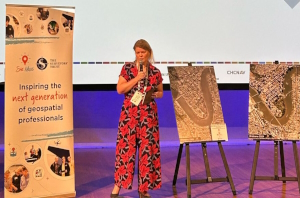 |
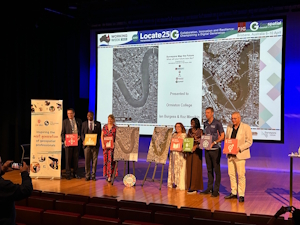 |
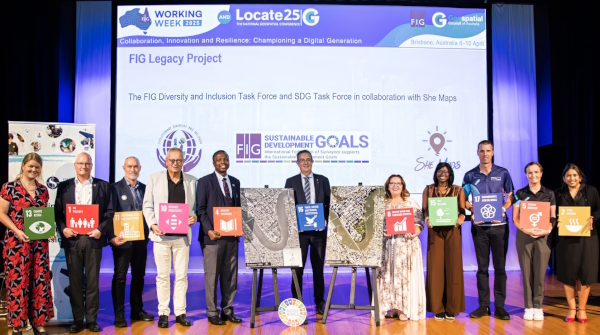
The Council established a new task force for 2019-2022 and continues it during the term 2023-2026.The task force will focus on FIG and the Sustainable Development Goals.This task force is chaired by Ms. Paula Dijkstra from the Netherlands.
Status Report and
Presentation, General Assembly 2021
Status Report, General Assembly 2020
Presentation, General Assembly 2019 in Hanoi, Vietnam
The Sustainable Development Goals (SDGs) and related land indicators will re-shape and influence our profession profoundly in the decade to come. It is considered to be of crucial importance that FIG member organisations and surveyors are aware and prepared on how their (daily) work contributes to the achievement of the SDGs and vice versa. FIG has a responsibility to raise awareness on the relevance of the SDGs and the indicators for FIG, the commissions and the delegates, to facilitate discussions to enhance SDG-related performance and to contribute to the achievement of the SDGs. At the General Assembly, during the FIG Working Week in Hanoi, the council established the Task Force on FIG and the Sustainable Development Goals. Ms. Paula Dijkstra was appointed to chair the Task Force.
At the General Assembly, during the FIG Working Week in Hanoi, the council established the Task Force on FIG and the Sustainable Development Goals. Ms. Paula Dijkstra was appointed to chair the Task Force. On this page the FIG community can find information about the relevant SDGs.
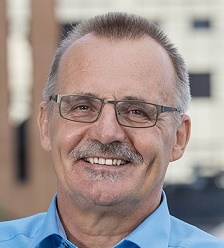 |
In 2015, the 17 Sustainable Development Goals were set by the United Nations General Assembly. How would you define the role of geospatial information in accomplishing these goals? “If you want to ‘measure’ the 17 SDGs and their degree of fulfilment, it is obvious that more than 70% of the goals are directly related to geospatial data. So the first priority for our profession is to deliver precise and up-to-date data enabling SDG-related performance to be measured. There is no doubt that the 17 SDGs are important milestones on the way to a better world in order to improve the living conditions for everybody. FIG will support the accomplishment of these goals without restrictions. The role of a professional organization like FIG is to offer expertise in the form of proposals, approaches or even solutions. In addition to this, with events like our Working Weeks and our Congress, FIG provides platforms where experts from all over the world – coming from academia (universities, research institutions), national mapping agencies, cadastre agencies, private-sector companies and international bodies – can gather and meet.” To read the full article, click here. |
 |
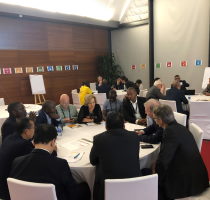 |
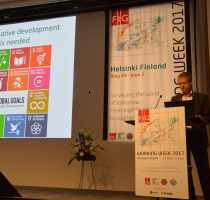 |
Structure of the Sustainable development goalsThe Sustainable Development Goals (SDGs) are 17 goals created by the UN to achieve peace and prosperity for people and the planet. Each SDG is split up in several smaller targets which, when reached, will achieve this goal. Each target has at least one indicator. The indicators are used to measure to what extent the target is achieved. Below the relevant SDGs, targets and indicators for each FIG Commission are mentioned. FIG members can contribute to the SDGs in two main ways. On the one hand they can create awareness and contribute to achieving the SDGs and the specific targets. On the other hand they can collect relevant data to contribute to the measurement of the targets by using the indicators. In cases where the FIG Commission can play a role in measuring the Indicator, the Indicator is marked green. For more information see UN SDG site. |
Important SDGs for FIG in generalAll the SDGs can be related to the work of FIG. However the following ten goals are, at the moment, considered to be of more importance to FIG:
|
See how the FIG Commissions work with the SDGsAn overview is prepared by the task force on FIG and the SDGs together with the commission chairs, to identify the relevant SDGs for each FIG commission. See the overview on how the FIG Commissions work with the SDGs.
|
As the FIG commission chairs near the halfway point in their terms, they reflect on the global and technological drivers influencing their work. The article Key Global and Technology Drivers Impacting Surveying describes the breadth of work across the FIG commissions as well as the common areas. The discussion is also informed by global reports such as the UN-GGIM’s Future Trends in Geospatial Information Management and the RICS Futures Report 2020. To read the full article, click here.

The countdown begins, only one decade to go to accomplish the Sustainable Development Goals (SDGs). The SDGs are the blueprint to achieve a better and more sustainable future for all and surveying professionals have a key role to play. It is therefore of crucial importance that FIG member organisations and surveyors are aware and prepared on how their work contributes to the achievement of the SDGs and vice versa. The SDGs were appointed as one of the central themes during the FIG Working Week 2020. Many colleagues from the FIG community shared their experiences at practical and strategic level. In this article you read about how the FIG community is helping to achieve and monitor the SDGs and what the role of the surveying community will be in the coming 10 years. Aspects that were highlighted in the papers range from land rights for all, to women's access to land, sustainable land use, cities livelihood and strengthened partnerships. To read the full article, click here.